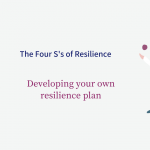Osteoporosis, a condition characterized by weakened and fragile bones, affects millions of people worldwide, particularly older adults. It is often referred to as a “silent disease” because it develops gradually over time and doesn’t exhibit noticeable symptoms until a fracture occurs. However, taking proactive steps to prevent osteoporosis and maintain bone health is essential for individuals of all ages. In this article, we will explore the importance of bone health, risk factors for osteoporosis, and strategies for prevention and maintenance.
Understanding Bone Health:
Bones are the structural framework of the body, providing support, protection, and allowing for movement. Bone health is crucial for overall well-being, and it begins in childhood and continues throughout life. The density and strength of bones peak in early adulthood and gradually decline with age, making bone health maintenance a lifelong endeavor.
Risk Factors for Osteoporosis:
Several factors contribute to the development of osteoporosis:
- Age and Gender: The risk of osteoporosis increases with age, and women are more susceptible due to hormonal changes that occur during menopause.
- Family History: A family history of osteoporosis may indicate a genetic predisposition.
- Dietary Factors: Inadequate calcium and vitamin D intake can weaken bones. High sodium intake and excessive caffeine and alcohol consumption can also negatively impact bone health.
- Physical Activity: Lack of weight-bearing exercise and sedentary behavior can lead to bone loss.

- Hormonal Imbalances: Conditions such as hyperthyroidism and certain hormonal treatments can contribute to bone loss.
- Medical Conditions: Certain medical conditions, like rheumatoid arthritis and digestive disorders, can interfere with nutrient absorption and affect bone health.
- Medications: Long-term use of corticosteroids and some other medications can decrease bone density.
Prevention and Maintenance Strategies:
- Calcium-Rich Diet: Consume a diet rich in calcium, including dairy products, leafy greens, and fortified foods.
- Vitamin D Intake: Ensure sufficient vitamin D intake through sunlight exposure and dietary sources like fatty fish, fortified dairy, and supplements if necessary.
- Regular Exercise: Engage in weight-bearing exercises such as walking, jogging, dancing, and weightlifting to promote bone density.
- Limit Alcohol and Caffeine: Moderation is key when it comes to alcohol and caffeine consumption.
- Quit Smoking: Smoking has a negative impact on bone health, so quitting is beneficial.
- Healthy Lifestyle: Maintain a healthy body weight and manage stress through relaxation techniques.
- Bone Density Testing: Periodic bone density tests can identify changes and help determine the effectiveness of preventive measures.
- Medication: In certain cases, healthcare professionals may recommend medications to prevent bone loss.
Bone Health Throughout Life:
Promoting bone health is a lifelong endeavor. Children and adolescents need adequate calcium and physical activity to build strong bones. Young adults can benefit from forming healthy habits that prevent bone loss later in life. Adults should continue to engage in weight-bearing exercises and consume a balanced diet. Older adults can focus on fall prevention strategies to avoid fractures.
Breaking the Gender Stereotype:
While osteoporosis is more common in women, men are also at risk. Men should not overlook bone health and should also adopt preventive measures to maintain strong bones as they age.
Consultation and Monitoring:
Regular visits to healthcare professionals are essential for assessing bone health and identifying any potential issues. Individuals with specific risk factors may require more frequent monitoring.
In Conclusion:
Osteoporosis prevention and bone health maintenance are integral to living a vibrant and active life. By understanding risk factors, adopting a bone-friendly lifestyle, and seeking guidance from healthcare professionals, individuals can take control of their bone health and reduce the risk of fractures and complications associated with osteoporosis. Prioritizing bone health empowers individuals to enjoy life to the fullest and age gracefully.




















Add Comment